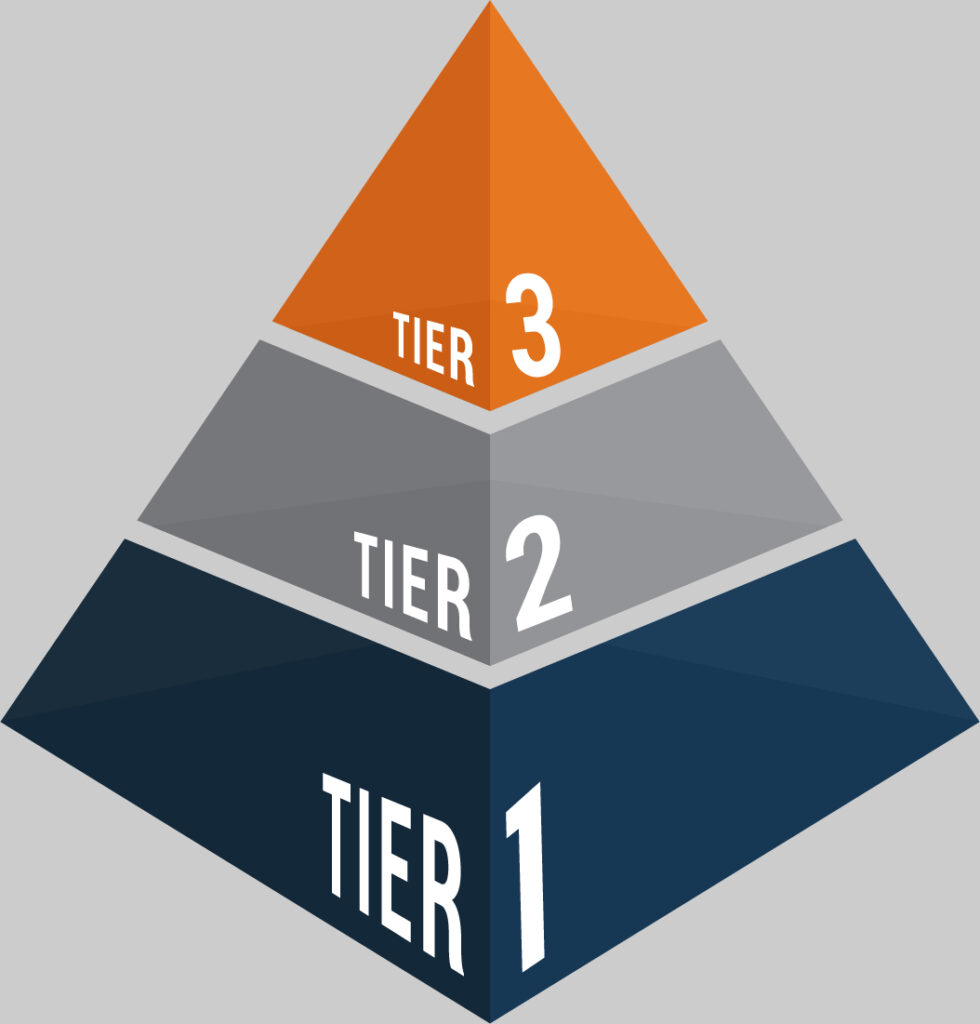January 14, 2025
Chronic absenteeism was a problem in many schools and districts prior to the COVID-19 pandemic. Since the pandemic, however, chronic absenteeism rates have only increased.
We know that students who miss school don’t learn the content and skills they need for success, but it can be challenging to figure out how to get chronically absent students back in the classroom. In a recent Renaissance webinar, two experts explored the root causes of student absenteeism and shared strategies for using a multi-tiered system of support (MTSS) framework to identify students at risk, intervene early, and track your interventions’ effectiveness.
In this blog, we’ll share key insights from the webinar, along with strategies you can implement in your school or district immediately to help reverse the rising tide of student absences. Our thanks to the webinars’ presenters for sharing their insights and experience with us:
- Dr. Sarah Brown, president of System Impact Consulting and co-author of the book Effective Universal Instruction: An Action-Oriented Approach to Improving Tier 1
- Kellie Kilde, MTSS Advisor at Renaissance and a former special educator and interventionist
Understanding the causes of chronic absenteeism in K–12 schools
Chronic absenteeism is defined as missing 10 percent or more of school days for any reason over the course of the year—roughly two days per month. According to recent research by Thomas Dee, every US state saw an increase in chronic absenteeism during the pandemic, and rates have continued to rise:
- In 2018–2019, the national chronic absenteeism rate averaged 14.8 percent
- In 2021–2022, the national chronic absenteeism rate had nearly doubled to 28.3 percent—or 6.5 million students
When students are not in school, they cannot benefit from the high quality Tier 1 instruction that is provided to all students as part of an MTSS framework. They also have a significantly increased risk of dropping out. This makes it essential to understand the causes of absenteeism and—more importantly—the elements of absenteeism prevention.
4 root causes of student absenteeism
According to Attendance Works, the reasons for student absenteeism can be traced to four primary causes:
- Barriers to attendance, such as chronic illness, poor transportation, lack of access to technology, and housing/food insecurity.
- Aversion to school, often due to academic struggles, social challenges, undiagnosed disability, and feelings of anxiety.
- Disengagement from school, due to boredom, lack of adult relationships at school, lack of academic and behavioral support, or lack of opportunities for enrichment.
- Misconceptions about the importance of daily attendance by students and families, such as believing absences don’t prevent learning, that only unexcused absences are a problem, or that even minor illnesses require students to miss school. In other cases, students and families simply lose count of and underestimate the total number of absences in a given year.
A first step in identifying and addressing chronic absenteeism is, of course, to gather accurate data on student attendance and to regularly review these data to identify at-risk students. This is where an MTSS framework and its emphasis on data-based decision making come into play.
Tools for MTSS success
Explore solutions from Renaissance that support effective, data-driven MTSS.
4 elements of absenteeism prevention
Although the reasons for absenteeism can be multi-faceted and can vary from student to student, effective prevention involves these four elements:
- Creating an attendance team that includes the principal and other school leaders, along with the school nurse, counselors/social workers, teachers, and administrative support staff.
- Reviewing both qualitative and quantitative data to assess each student’s level of risk.
- Aligning tiered resources and supports to best engage students in school.
- Communicating with families and communities to reverse misconceptions about absenteeism.
A diverse attendance team will bring various perspectives as they tackle attendance-related issues. The team’s role is to determine the resources to be used in each MTSS tier, use actionable data that’s collected routinely and in a timely way, parse the data to ensure the right resources are being used with each student, and support classroom teachers in taking a proactive approach to attendance.
Team members should meet regularly at the start of the school year to identify student needs and potential attendance problems. These meetings should occur weekly if more than 10 percent of the students are chronically absent, and monthly if not.
Team members will need enough time to review attendance data for individual students, classes, and grades, as well as the school and district as a whole. However, an important goal of these meetings is to avoid spending all of the time focused on the students who have the greatest need.
Educators clearly want these kids back in school, but they must also prevent other students from reaching this stage. It’s ultimately easier to prevent attendance problems from occurring than it is to fix problems once they’ve arisen.
MTSS as a framework for preventing chronic absenteeism
Discussions of MTSS in education typically make reference to the MTSS pyramid. This pyramid represents a multi-tiered framework that relies on data to determine the effectiveness of practices and support for student needs.
In the context of attendance, the three tiers of the MTSS pyramid can be described as follows:
- Tier 1 encompasses the high-quality classroom instruction and supports that all students receive every day. Here, the emphasis is on proactively encouraging attendance and preventing issues before they arise.
- Tier 2 involves standardized, targeted interventions for students who are at risk. These interventions are often delivered in small groups and build upon Tier 1 resources.
- Tier 3 involves more intensive, individualized interventions and supports for students with the greatest need. Again, these interventions build upon Tier 1 resources.

As the webinar’s presenters point out, it’s important to keep in mind that the MTSS tiers contain resources, not students. To put this another way: There are no “Tier 2 students” or “Tier 3 students.” Instead, there are students who are receiving Tier 2 or 3 services and who are benefiting from Tier 2 or 3 interventions related to attendance.
This shift in semantics may seem minor, but it can make a big difference in how educators work with these students. If educators only view students in terms of the tiers, they may unwittingly “expect” certain students to be chronically absent, which can lessen the urgency of addressing the problem.
Gathering the right student attendance data
As noted earlier, attendance teams need access to accurate data to assess each student’s level of risk. A data visualization platform such as eduCLIMBER can be especially useful here, breaking down the necessary student and school data into targeted reports and bringing efforts together within a school and across a district.
What does this process involve?
As the team analyzes both quantitative and qualitative information in eduCLIMBER, they gain a better understanding of absenteeism in a school and patterns for both individual students and specific groups. This involves learning not just when students are absent, but also why:
- Quantitative data takes the form of aggregated attendance information that’s updated daily. These data help the team to identify the buildings, grades, and classes that have the highest levels of absenteeism. These data also show whether certain days of the week or months of the year are more affected than others.
- Qualitative data captures the reason for each absence. These data help the team to identify trends and better allocate resources to address the primary causes of absenteeism. These data can also help the team to determine whether attendance coding is consistent across classrooms and buildings, and whether the importance of attendance is regularly shared with families and other stakeholders.
Using tiered interventions to reduce student absences
Once the team has reviewed the data, the next step is aligning resources to student needs, with the goal of promoting greater engagement and reducing absences. This process requires a somewhat different approach at each tier, given the number of students who can be served effectively and the types of resources available.
Tier 1: Focusing on prevention
Tier 1 is where schools have the most resources and broadest reach, given that Tier 1 services are provided to all students. Viewing data through a Tier 1 lens helps the team to identify and proactively target the primary reason(s) for absences.
In Tier 1, schools can address the causes of absenteeism by:
- Identifying the most common barriers to attendance and finding solutions, such as improved transportation, free school meals, and telehealth services.
- Discovering misconceptions about attendance policies and communicating better or differently with families.
- Promoting daily attendance through student recognition, incentives, and celebrations.
- Re-engaging disengaged students by striving to build personalized relationships and creating a welcoming environment for all learners.
- Surveying students to uncover non-academic barriers to learning and success, such as lack of confidence, motivation, and connectedness. A screener such as Renaissance Fundamentals—which students complete in 15 minutes or less—provides a wealth of data on students’ attitudes toward school and conception of themselves as learners.
Tier 1 services should fully meet the needs of students whose absence rate is less than 5 percent (9 days or fewer).
Tier 2: Additional support for at-risk students
Students whose absence rate is 5–10 percent (roughly 10–18 days) are at risk of chronic absenteeism and require Tier 2 services as well.
In Tier 2, schools can address the causes of absenteeism by:
- Sending letters home if misconceptions or disengagement are the cause, mentioning the number of absences and conveying a desire for a positive partnership with the family.
- Checking in and connecting with students through individualized attention and performance monitoring if disengagement is the cause.
- Creating an attendance contract with mental health support if aversion is the problem, focusing on reducing anxiety related to school attendance and routines.
Tier 3: Intensive, individualized support
Tier 3 services are designed for students with moderate chronic absenteeism (18–36 days) or severe chronic absenteeism (more than 36 days). Tier 3 involves the most intensive interventions, which are provided in addition to Tier 1.
In Tier 3, the attendance team can help by:
- Overcoming students’ barriers to attendance, such as by providing clothing, hygiene assistance, transportation assistance, and school supplies.
- Partnering with local agencies and community organizations for support connected to housing or mental health.
- Digging deep into the data to note a pattern of specific days or times missed to help root out other causes.
eduCLIMBER: Providing actionable data to reduce absenteeism
As noted earlier, the most effective solution to chronic absenteeism is to prevent it from occurring in the first place.
One of eduCLIMBER’s key features is called Thresholds—an early warning system that provides automated data monitoring across attendance, assessment, behavior incidents, and more. These Thresholds can tag students who meet specific criteria in order to help the attendance team quickly identify at-risk students and provide the right interventions.
Team members can then use eduCLIMBER’s data dashboards and collaboration tools to:
- Evaluate the interventions’ effectiveness
- Monitor equity and opportunity
- Identify longitudinal trends
- Provide regular reporting to stakeholders and families
As the webinar’s presenters make clear, chronic absenteeism is a multi-faceted problem with a variety of causes. Insights from eduCLIMBER help leaders to drive system-level improvements and make it easier for educators to support every student, both academically and non-academically.
Learn more
Connect with an expert to explore how eduCLIMBER will support your teams in reducing student absences.

